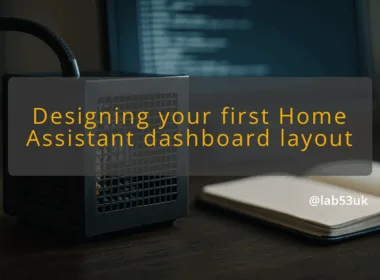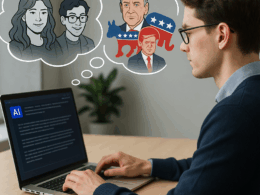Crafting a Resilient Cloud Infrastructure Post-Microsoft-OpenAI Split
The split between Microsoft and OpenAI has forced a lot of teams to rethink assumptions about where AI runs and who supplies it. I’ll walk through a practical, step-by-step approach to harden cloud infrastructure so it survives partner shifts. This is hands-on. No marketing fluff. Read it and act.
Strategies for Managing Cloud Infrastructure Changes
Assessing Current Cloud Infrastructure Needs
Start with facts, not feelings. I inventory workloads, data flows and dependencies. Ask three questions for each service: where does it run, who owns the model or API, and what happens if that provider changes terms or access.
Steps I use:
- Map every service to a business function and the cloud services it uses (compute, object storage, managed databases, GPU/TPU instances, identity).
- Label dependencies on third-party AI models or APIs and the authentication method.
- Classify each dependency by criticality: single-point failure, recoverable, optional.
Keep the inventory as a simple CSV or YAML. Example columns: service, cloud provider, region, AI model provider, auth method, failover plan, RTO, RPO. That makes later decisions concrete.
Identifying Key Partners in AI
Do not bet everything on one vendor. I separate platform providers (IaaS/PaaS) from model providers. A cloud service can host several model providers. Choose partners for these roles:
- Infrastructure provider for compute and storage.
- Model or API provider for pretrained models.
- Niche vendors for specialised models or tooling.
Practical check: confirm contractual access to your data and keys. If an AI partner can revoke access or change revenue share overnight, plan for alternatives. Ask partners for SLAs and exportable model checkpoints where possible.
Planning for Scalability and Flexibility
Design for change. I build cloud infrastructure with portability in mind.
Concrete tactics:
- Use containerised inference (Docker + Kubernetes) or serverless wrappers so models can move between clouds or on-prem.
- Standardise on open formats (ONNX, SavedModel) where possible.
- Keep infrastructure-as-code (Terraform, Pulumi) modules per provider to spin up equivalents quickly.
- Use multiple regions and set up cross-region replication for stateful stores.
Example: run a primary inference cluster on hosted GPU instances and a smaller warm standby in another provider. If the primary provider restricts a model, switch traffic to the standby while you rework licensing.
Implementing Robust Security Measures
Cloud services and model APIs change. That makes security non-negotiable.
Action checklist:
- Centralise secrets in a vault with rotation and short TTLs.
- Enforce least privilege with IAM roles, not broad keys.
- Encrypt data at rest and in transit. Treat model prompts that include sensitive data as regulated.
- Log everything important and ship logs to an immutable store.
I run periodic breach drills. Simulate a credential revocation and confirm you can rotate keys and redeploy in under your RTO.
Monitoring and Optimising Performance
You cannot improve what you do not measure.
What I monitor:
- Latency and error rates per model and per provider.
- Cost per inference and cost per request.
- Model quality drift metrics if you run your own fine-tuned models.
Set alert thresholds for cost spikes and error-rate increases. Automate traffic shaping: send a small percentage of requests to candidate providers to compare latency and quality before full cutover. Use canary deployments and rollbacks for model swaps.
Adapting to Evolving AI Partnership Dynamics
Understanding Market Trends and Competitor Moves
Keep a watching brief, but act locally. I track releases and licensing changes from major players, and test publicly available models as they mature. That tells me whether migrating to an alternative is feasible technically.
Practical habit: maintain a short list of three candidate model providers and run quarterly tests on cost, latency and output quality. That keeps switching costs visible before a crisis.
Aligning Business Goals with AI Capabilities
Match AI choices to what actually moves the needle. I ask: does this model reduce cost, speed up a task, or unlock revenue? If the answer is marginal, keep the service simple.
Decision matrix:
- Critical revenue function: prioritise resilience and multi-provider redundancy.
- Internal productivity: prefer hosted cloud services with low ops overhead.
- Experimental features: use ephemeral cloud resources or isolated accounts.
Navigating Financial and Legal Considerations
Contracts and cost matter. I treat licence terms and revenue share as first-class technical constraints.
Checklist:
- Insist on clear exit clauses that let you export data and models.
- Budget for dual-run periods where both old and new providers run in parallel.
- Monitor vendor billing alerts. Spike protection saves surprise invoices.
If legal terms are fuzzy, slow the rollout until they are clear. Migration under duress is expensive and sloppy.
Fostering Collaborative Relationships
I keep lines open with providers. That means assigned contacts, regular technical calls and clear reporting on usage. Good relationships buy time during disputes. Do not confuse goodwill with an SLA, though. Use both.
Practical tip: set up a runbook for provider incidents with named contacts, escalation steps, and a predefined cutover plan.
Preparing for Future Innovations in Cloud Technology
Plan for modular upgrades. The next major change might be new model formats, hardware accelerators or edge inference. I keep the architecture layered so I can drop in new compute types without rewriting everything.
Actions to future-proof:
- Abstract runtime via a simple API gateway so downstream code does not call providers directly.
- Keep training data and model artefacts in a neutral, exportable format.
- Automate testing against new hardware or model versions in CI.
Verification steps: every time a new provider or format is added, run a full regression of latency, cost and output quality. Document the differences and update runbooks.
Final takeaways
Treat cloud infrastructure as replaceable parts, not sacred cows. Inventory everything. Isolate AI model dependencies. Automate deployments and secrets. Test failovers and billing scenarios before they bite. Make contractual exit paths explicit. Keep an eye on market shifts and run regular migration rehearsals. Do that and the Microsoft–OpenAI split becomes a planning exercise, not a crisis.










